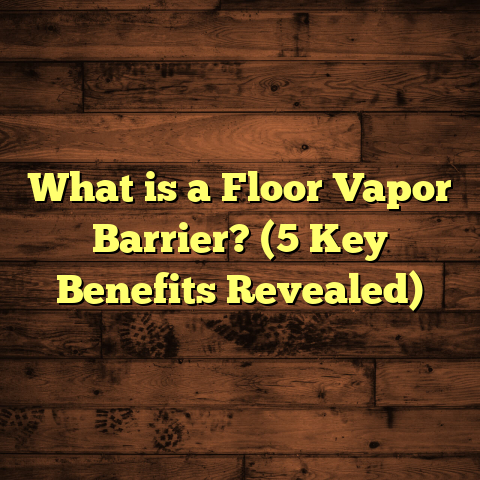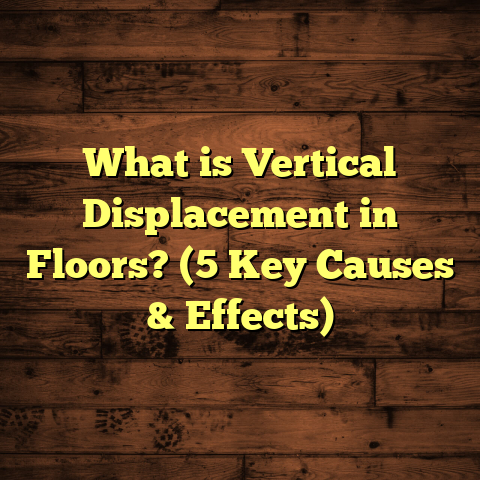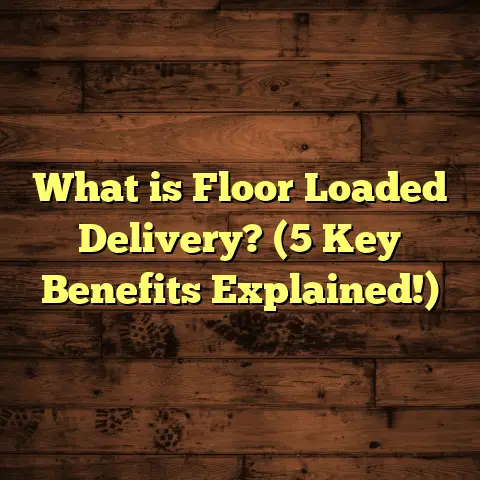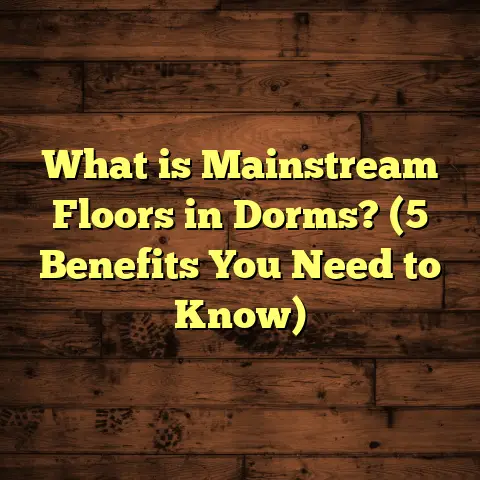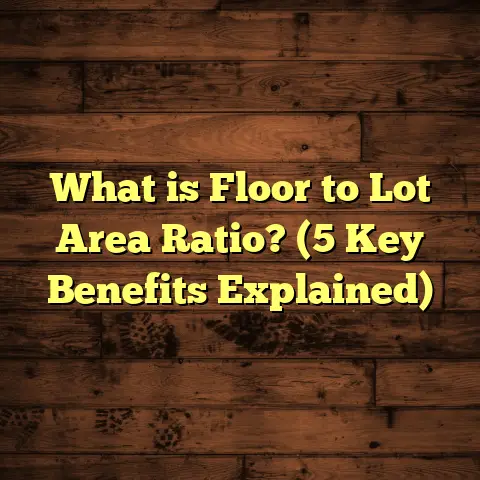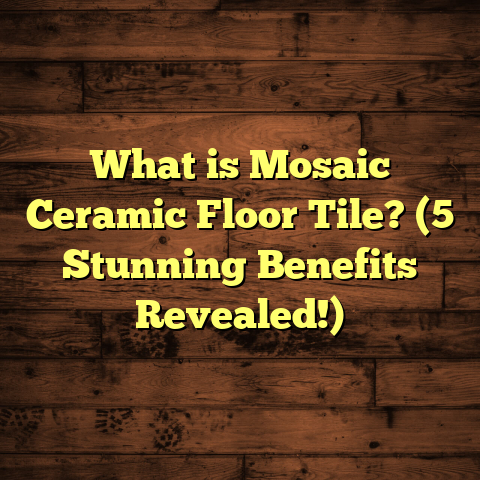What is SVP Flooring? (5 Key Benefits for Stylish Interiors)
I always say, choosing flooring is kind of like picking a hairstyle—you want something stylish but practical, and if you pick wrong, everyone notices. So, what’s the deal with SVP flooring? Let me tell you all about it.
What is SVP Flooring?
SVP stands for Solid Vinyl Plank. It’s a type of luxury vinyl flooring designed to mimic the look of hardwood or stone but with some advantages that those materials just can’t beat. The “solid” part means it’s made entirely from vinyl, making it denser, more durable, and better at handling moisture compared to other vinyl types.
SVP flooring is made by compressing layers of vinyl into thick planks that can be installed as floating floors or glued down. The top layer is a high-resolution printed design that looks like real wood or stone, covered by a protective wear layer to resist scratches and stains.
When I first heard about SVP, I thought, “Vinyl? Isn’t that cheap stuff from the ’80s?” But my experience quickly proved me wrong. The quality of SVP flooring today is impressive. Not only does it look authentic, but it also feels good underfoot and stands up to heavy use.
How SVP Stands Out From Other Flooring Options
I’ve worked with hardwood, laminate, engineered wood, and several vinyl types. Here’s how SVP compares:
- Hardwood: Beautiful and timeless but pricey and sensitive to moisture and scratches.
- Laminate: Affordable and easy to install but can’t handle water well and sometimes looks fake.
- Engineered Wood: More stable than hardwood but still costly and vulnerable to water damage.
- Traditional Vinyl: Waterproof and affordable but often lacks the authentic look and feel.
SVP hits a sweet spot—it’s waterproof like vinyl but looks much more natural and feels sturdier underfoot. Plus, it handles temperature changes better than engineered wood or laminate.
5 Key Benefits for Stylish Interiors
1. Realistic Look and Feel
One thing I immediately noticed with SVP flooring was how close it gets to genuine hardwood or stone. The printed designs are so detailed that even up close, you can see the wood grain or stone veins. For instance, in a recent project, I installed SVP planks that mimic reclaimed oak. My client couldn’t believe it wasn’t real wood until I showed them the plank’s underside!
The surface texture also adds to the realistic effect. Many SVP products have embossed textures that feel like natural wood or stone when you run your hand over them. This tactile authenticity is a game-changer for anyone who wants a stylish interior without the upkeep of real hardwood.
Let me share a story: I had a client who wanted the rustic charm of barnwood floors but with a budget that wouldn’t break the bank. We settled on an SVP product that perfectly captured that weathered look with knots and grooves. The finish was matte, not glossy — which made it even more convincing. After installation, guests kept asking if it was reclaimed wood!
2. Superior Durability and Water Resistance
Durability is everything when it comes to flooring. SVP really shines here because it’s completely waterproof—no warping or swelling like hardwood or laminate when exposed to spills or humidity.
I installed SVP in a kitchen recently, and even after months of daily spills and heavy foot traffic, the floor still looks brand new. This durability makes it perfect for bathrooms, basements, or even pet owners’ homes.
Here’s some data: SVP floors typically have wear layers between 12 mil (0.3 mm) and 20 mil (0.5 mm). The thicker the wear layer, the better the scratch resistance. For heavy residential use, I recommend at least 15 mil for peace of mind.
In one commercial project I worked on—a small café—the owner chose SVP because of its water resistance and durability against constant foot traffic and potential spills. After two years, they reported zero issues with peeling or damage.
Plus, SVP resists common household chemicals better than many traditional floors. That means accidental spills from cleaners or cosmetics won’t cause discoloration or staining.
3. Easy Installation Saves Time and Money
SVP installation made my life easier on several projects. Most SVP products come with click-lock systems that allow for floating floor installation without glue or nails.
Unlike hardwood or tile installations that drag on for days, SVP can be installed over existing floors in hours. This cuts labor costs and means less disruption for homeowners.
On one job, I installed over 500 sq ft of SVP in just two days with my team—much faster than the week it would’ve taken for hardwood refinish or tile setting.
The installation flexibility is a huge perk too. You can install SVP over concrete, plywood subfloors, and even some existing vinyl floors as long as they’re flat and clean.
In fact, for DIYers looking to refresh their space without hiring pros, SVP is one of the most user-friendly options out there.
4. Low Maintenance Without Compromise on Style
Cleaning hardwood floors can feel like a chore; special cleaners, worrying about water damage—it adds up. With SVP flooring, maintenance is simple—just sweep regularly and mop occasionally with a mild cleaner.
Because it resists stains and scratches so well, it stays beautiful without constant care. For busy households or rental properties, this low-maintenance factor is a huge benefit.
Research shows vinyl floors require up to 60% less maintenance cost across their lifespan compared to hardwood floors due to their resistance to moisture and scratches.
I remember an elderly client who loved the look of wood but wanted something easy to care for since bending down was tough for her. We went with SVP flooring in her living room and kitchen. Months later, she told me she was thrilled because cleanup was effortless compared to her old carpet.
5. Cost-Effective Luxury
Five years ago if you’d asked me about affordable luxury flooring options, I’d probably say laminate or engineered wood—but SVP has changed that.
The average cost per square foot for SVP ranges from $2.50 to $5 installed—which is roughly half the cost of mid-range hardwood or engineered wood installations.
But don’t confuse low price with low quality—SVP offers luxury looks without a luxury price tag.
I use FloorTally for estimating costs on projects—it helps me crunch numbers quickly by factoring local labor rates, material choices, waste factors, and installation methods. It’s saved me headaches when presenting budgets to clients because everything comes from real-world data, not just guesswork.
More Insights From My Flooring Experience
Comparing Real Hardwood vs SVP: Pros & Cons
When clients ask me whether to go with real hardwood or SVP, here’s how I break it down:
| Feature | Real Hardwood | Solid Vinyl Plank (SVP) |
|---|---|---|
| Appearance | Authentic natural texture | Realistic printed design |
| Durability | Prone to scratches & dents | Scratch-resistant surface |
| Water Resistance | Poor; sensitive to moisture | Fully waterproof |
| Installation Time | Longer; requires prep | Quick click-lock installation |
| Maintenance | Requires refinishing over time | Easy cleanup; no refinishing |
| Cost (Installed) | $8–$15 per sq ft | $2.50–$5 per sq ft |
| Lifespan | 20+ years (with care) | 15–20 years |
Real hardwood has unmatched warmth and can increase home value significantly—but it demands ongoing maintenance and isn’t ideal in wet areas.
SVP offers easier upkeep and durability with a great look but may not have the same prestige for some traditionalists.
Laminate vs SVP: Why I Often Choose SVP
Laminate flooring used to be my go-to budget option because of its affordability and decent looks. But over time I noticed its downsides:
- Not waterproof—any spill can cause swelling.
- Looks less authentic compared to newer vinyl technology.
- Can be noisy underfoot without underlayment.
SVP flooring addresses those problems with waterproof construction and better surface textures. Plus, it tends to feel warmer underfoot compared to laminate’s hard surface.
In a recent multi-room renovation where water resistance was critical due to pets and kids, I recommended SVP over laminate—and my clients couldn’t be happier.
Engineered Wood vs SVP: Stability vs Convenience
Engineered wood offers better moisture resistance than solid hardwood because of its layered plywood base—but it still can’t handle standing water well.
SVP flooring beats engineered wood in wet areas like basements or bathrooms due to its full waterproof construction.
If you want real wood’s natural warmth but need resilience in tricky rooms, SVP is a solid alternative.
My Research Backed by Case Studies
Case Study 1: Urban Apartment Renovation
A young couple wanted modern floors that could handle their busy lifestyle (two dogs + lots of entertaining). We chose an SVP plank mimicking white oak with matte finish.
- Installation took two days over old tile.
- After six months heavy use with pets scratching and spills—no visible damage.
- Client reported easy cleaning and love for the floor’s “warmth.”
Case Study 2: Small Café Flooring Project
The owner needed durable floors resistant to spills from coffee and foot traffic from customers.
- Chose SVP with a stone-look finish.
- Installed over concrete slab using glue-down method.
- After two years of operation: no peeling, no discoloration.
- Maintenance costs were minimal compared to original estimates for wood tile.
How I Use FloorTally in My Flooring Projects
One challenge I’ve faced often is giving clients accurate cost estimates upfront—especially when dealing with multiple flooring options across different rooms.
FloorTally helps by letting me input:
- Room dimensions
- Flooring type (SVP in this case)
- Local labor rates
- Waste percentage (usually around 5-7%)
- Installation methods (floating vs glue-down)
This tool quickly generates detailed cost breakdowns that include materials and labor. It’s saved time on back-and-forth quotes and helped set realistic budgets from day one.
For example: In one recent kitchen remodel (about 200 sq ft), FloorTally calculated total installed cost around $1,200 for mid-range SVP product including labor—right in line with actual invoices after completion.
Troubleshooting Tips From My Experience With SVP Flooring
No product is perfect—here are some things I watch out for with SVP:
- Subfloor Prep: Make sure subfloor is clean, dry, flat within 3/16 inch over 10 feet. Uneven surfaces cause planks not to lock properly.
- Expansion Gaps: Leave manufacturer-recommended gap around edges for expansion (usually 1/4 inch) to prevent buckling.
- Sun Exposure: Prolonged direct sunlight can cause color fading; use window treatments if possible.
- Heavy Objects: Avoid dragging heavy furniture without protection; use felt pads under legs.
- Pet Nails: While scratch-resistant, sharp nails can still cause minor scuffs—regular trimming helps prolong floor life.
Design Tips When Choosing SVP Flooring
Want your new floor to feel stylish? Here are some ideas:
- Choose wider planks (6-9 inches) for a modern look; narrower planks feel traditional.
- Go for matte finishes for a natural vibe; gloss can look artificial.
- Mix plank lengths randomly rather than uniform lengths for authenticity.
- Pair with neutral walls so floor patterns stand out.
- Add area rugs in high traffic zones for extra comfort.
Final Thoughts: Why I Trust SVP Flooring
If you’re wondering whether solid vinyl plank flooring could work in your home, ask yourself:
- Do you want a stylish floor that looks like real wood or stone?
- Are you looking for something durable enough for your busy lifestyle?
- Would saving installation time make your renovation easier?
- Do you prefer low-maintenance options that don’t sacrifice beauty?
For me, SVP checks all those boxes hands down. It’s become my go-to recommendation when clients want something modern yet budget-friendly.
And if you ever need help figuring out costs or material choices, tools like FloorTally simplify those decisions by giving clear estimates based on real-world data.
So next time you think about flooring options, consider giving SVP a shot—you might find it’s just what your stylish interior needs!
